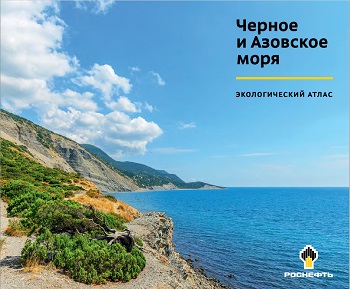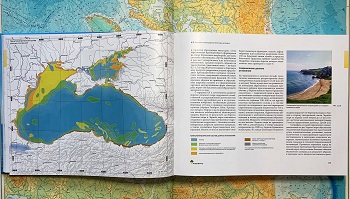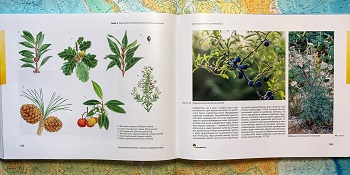Please activate JavaScript in your browser to use all interface options.
Environmental Atlas of the Black and Azov Seas Published by Rosneft
08 May 2020
Rosneft, together with the Innopraktika non-governmental development institute, has published a unique atlas of the Black and Azov Seas in the series entitled Ecological Atlases of the Seas of Russia. The Atlas consists of six thematic chapters and is a valuable scientific publication on physical geography, oceanology, hydrometeorology, ecology, economic potential, and research history of the Black and Azov Seas and their coastal areas.
 This publication was the result of the excellent work of specialists from the Arctic Scientific Center (part of the Rosneft corporate research and design complex) and leading scientific institutes of Russia, including Lomonosov Moscow State University, Shirshov Institute of Oceanology, Kuban State University, Southern Scientific Center of the Russian Academy of Science, Russian Federation Research Institute of Fishery and Oceanography, the Caucasus Natural Biosphere Reserve Sochi National Park, etc., as well as cartographers and illustrators. The publication presents more than 50 thematic maps of the offshore and coastal areas of the Black and Azov Seas.
This publication was the result of the excellent work of specialists from the Arctic Scientific Center (part of the Rosneft corporate research and design complex) and leading scientific institutes of Russia, including Lomonosov Moscow State University, Shirshov Institute of Oceanology, Kuban State University, Southern Scientific Center of the Russian Academy of Science, Russian Federation Research Institute of Fishery and Oceanography, the Caucasus Natural Biosphere Reserve Sochi National Park, etc., as well as cartographers and illustrators. The publication presents more than 50 thematic maps of the offshore and coastal areas of the Black and Azov Seas.
 The publication describes in detail the changes occurring in recent decades associated with natural and anthropogenic factors, as it pays special attention to the state of ecosystems of the Black and Azov Seas. The Atlas presents valuable scientific data on the environment, including the result of Rosneft’s many years of research of the sea in the licensed areas of the Company, as well as during a comprehensive project for the study of marine mammals of the Black Sea.
The publication describes in detail the changes occurring in recent decades associated with natural and anthropogenic factors, as it pays special attention to the state of ecosystems of the Black and Azov Seas. The Atlas presents valuable scientific data on the environment, including the result of Rosneft’s many years of research of the sea in the licensed areas of the Company, as well as during a comprehensive project for the study of marine mammals of the Black Sea.
Ecological Atlas of the Black and Azov Seas
Note for Editors:
In 2019, Rosneft together with Innopraktika, a non-governmental development institute, published a unique atlas “Russian Arctic. Space, Time, Resources”. The Atlas pays great attention to the natural environment and resources of the Arctic. It details history, culture, ethnography, economics, the social sphere, infrastructure and development prospects of the polar regions.
Rosneft and Innopraktika published “Kara Sea”, “Laptev Sea” and “Marine Mammals of the Russian Arctic and the Far East” ecological atlases as a part of the “Russian Arctic Sea Atlases” series. The series provides up-to-date knowledge in physical geography, oceanology, hydrometeorology, ecology, and marine mammals’ dispersal based on the fund data and the researching results of Rosneft Oil Company in 2012-2016 in the Arctic. The Environmental Sensitivity Index (ESI) system has been adapted for the marine bank typification sections.
Support for the project to study and monitor marine mammals of the Black Sea is part of Rosneft’s large-scale environmental programme. The project is implemented by the Institute of Oceanology of the Russian Academy of Sciences. In September 2018, the first sea expedition took place. Full-fledged studies of the dolphins’ habitat have not been conducted since the 80s of the last century. Currently, two full-scale maritime expeditions have been organized along the entire coast of the Krasnodar Territory, each with a length of about 1,000 km, as well as airborne registration on a 700 km route along the Black Sea from Anapa to Adler. Scientists have studied more than 2,000 individuals of dolphins and collected extensive scientific material to compile photo and acoustic catalogues of the Black Sea cetaceans living in the area. In addition, shore-based studies were carried out; samples were taken for study in specialized laboratories.
Rosneft
Information
Division
May 8, 2020

-315xx70.png)

